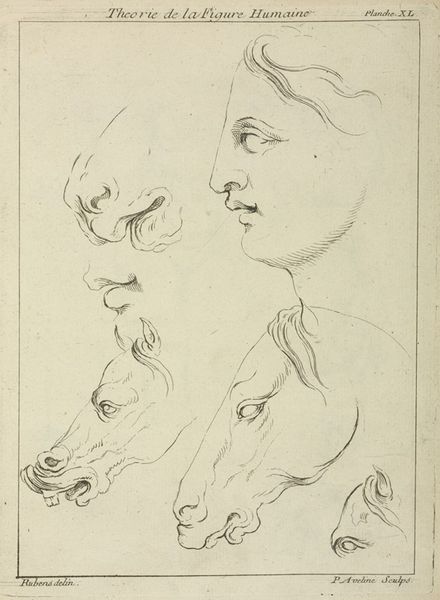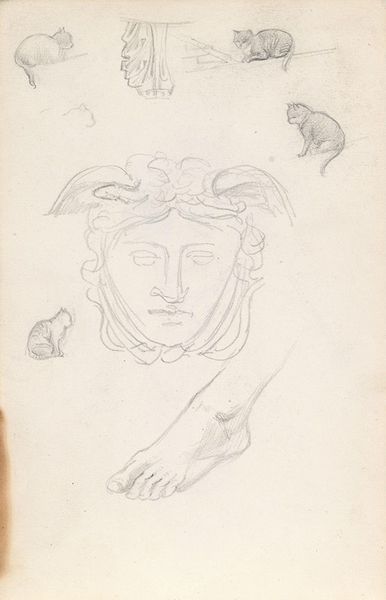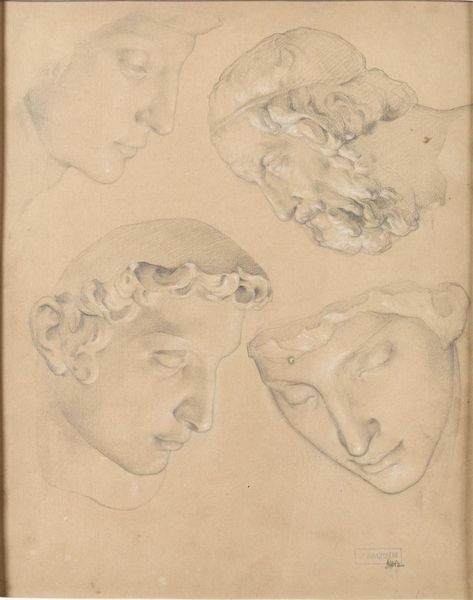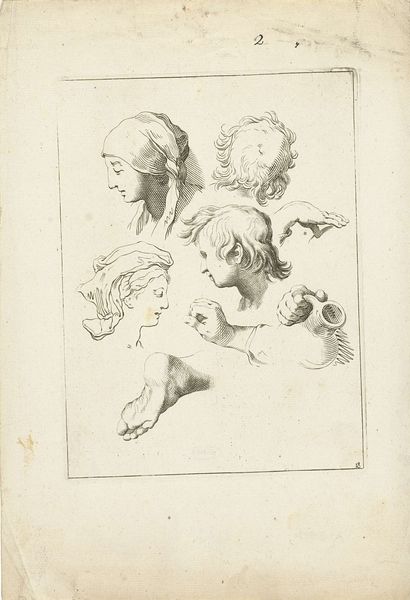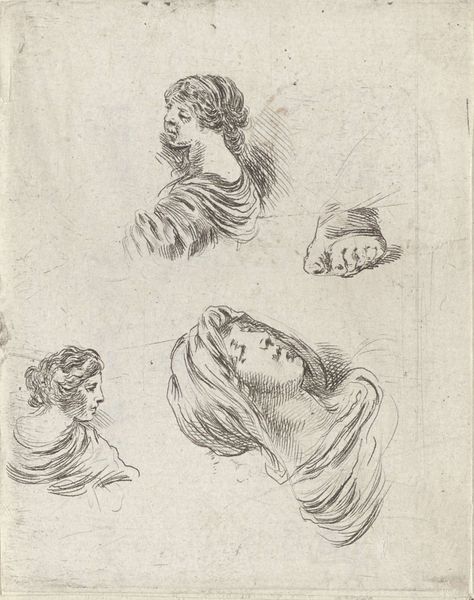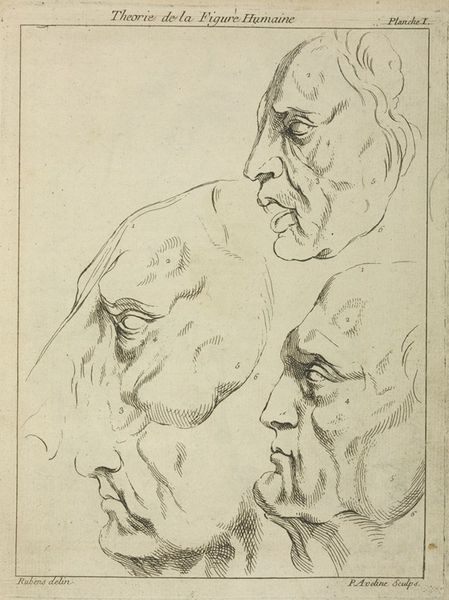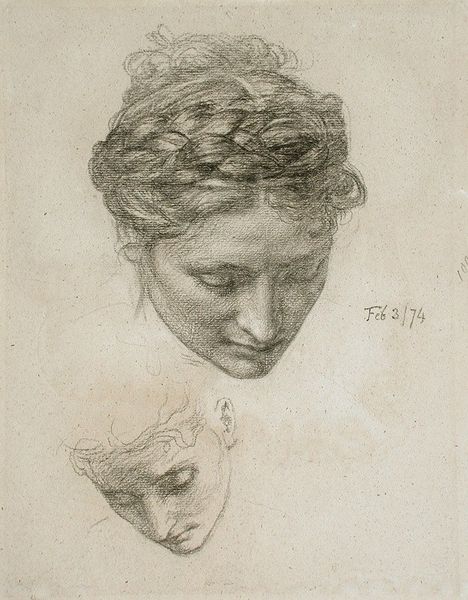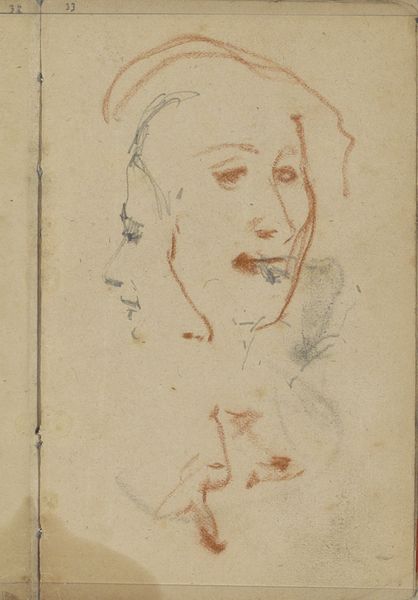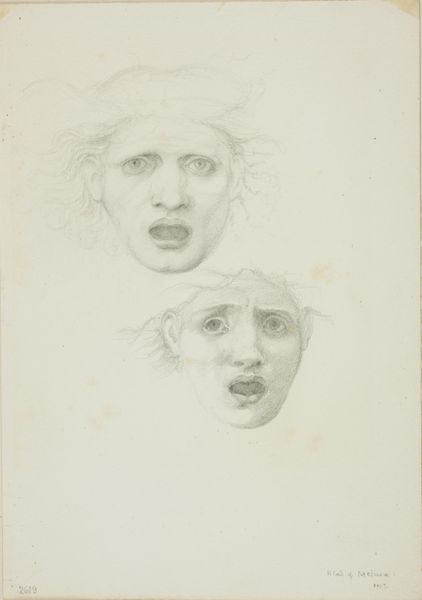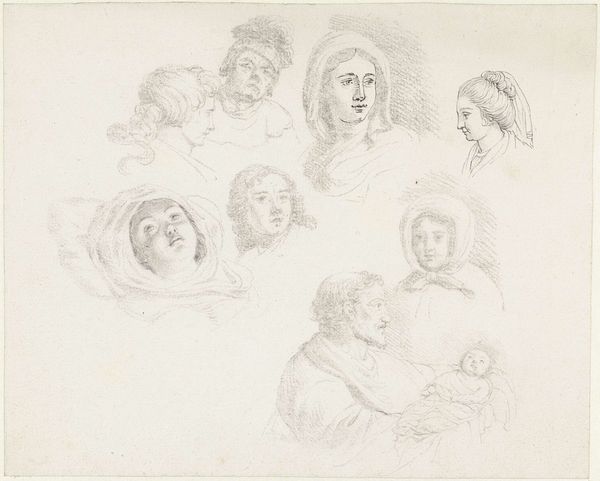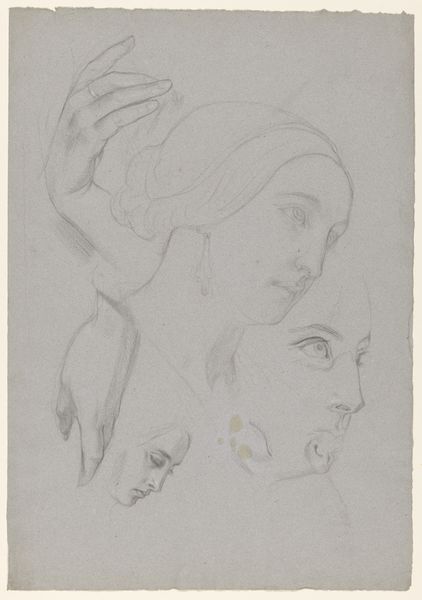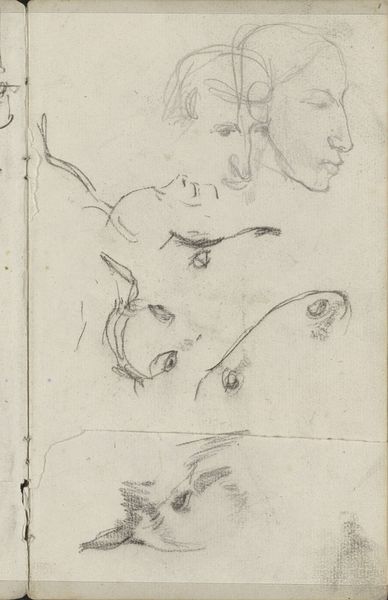
drawing, paper, pen
#
portrait
#
drawing
#
comic strip sketch
#
pencil sketch
#
paper
#
personal sketchbook
#
idea generation sketch
#
sketchwork
#
ink drawing experimentation
#
sketchbook drawing
#
pen
#
portrait drawing
#
storyboard and sketchbook work
#
academic-art
#
sketchbook art
Copyright: Public Domain: Artvee
Curator: Let's turn our attention to this intriguing study by Peter Paul Rubens entitled "Two human female faces and two noses–one human, animal." The artwork’s skeletal presentation strikes me immediately. Editor: Indeed. It feels clinical almost, an anatomical investigation laid bare. The lines are so stark, rendering the features without the softness we often associate with portraits. There's a deconstruction happening here. What is he trying to show us? Curator: I see it as an exploration of ideal form. Look at the meticulous attention given to the planes of the face, the careful rendering of light and shadow defining the musculature. It is form distilled. Notice, too, how the isolated noses further abstract the anatomical study from the human into studies in forms, shadows, and light. Editor: Yet the noses introduce a point of potential subversion. You said that these facial studies work to express form, but this reading doesn't account for why one of the noses is distinctly animal. Here, Ruben draws an unsubtle tie to animalism which, especially when studying the 'ideal form', speaks to troubling traditions in phrenology and early criminology which attempted to link moral depravity to outward appearance. It’s uncomfortable. Curator: I agree that these associations certainly can cause a degree of discomfort. The contrast you identify between the refined human features and the crudeness of the animal nose highlights the tension within Ruben’s representation of beauty, its formal characteristics become an uncomfortable reflection. Editor: It forces a consideration of what ideals truly mean. The piece is unsettling. How can our aesthetic values perpetuate ideas about whose humanity matters, and whose does not? It becomes a question of visibility itself – who is rendered fully, with sensitivity, and who is reduced to parts that index something “less than”? Curator: An excellent point; it reminds us that even seemingly objective studies carry with them cultural and historical baggage. Editor: Exactly, and this recognition allows us to examine art's role in either reinforcing or dismantling those deeply embedded ideologies. Curator: Well, this has certainly given me much to consider. A deconstruction with unexpected social insight! Editor: Yes, a clinical exploration turned reflective examination of power. Compelling.
Comments
No comments
Be the first to comment and join the conversation on the ultimate creative platform.
